Do you have a question about the Siemens SENTRON PAC4200 and is the answer not in the manual?
Describes the manual's purpose and intended audience.
Outlines the necessary technical knowledge for understanding the manual.
Provides critical safety warnings and precautions for handling the device.
Explains the meaning of safety symbols found on the device.
Describes the key features of the SENTRON PAC4200 device.
Details the current and voltage measurement capabilities.
Introduces the load profile recording functionality.
Specifies safe mounting locations for the device.
Lists operating and storage environmental conditions.
Instructions on how to unpack the device and check its condition.
Tools and steps for mounting the device.
Critical safety instructions for electrical connections and handling.
Instructions for connecting cables to screw and ring lug terminals.
Instructions for applying the necessary supply voltage, including safety.
Details the process of configuring device settings.
Overview of the device's front panel displays and operator controls.
Describes the main menu structure and navigation.
Lists the categories of device settings available.
Settings for load profile, subperiod, and synchronization source.
Default password information.
Information on the need to periodically replace the battery.
Information regarding device repair and warranty loss.
Lists accuracy classes for various measured variables.
Lists device dimensions, cutout, mounting, and weight.
Provides the dimensions for the panel cutout.
Illustrates side-by-side installation and clearance requirements.
Lists MODBUS registers for measured variables without time stamps.
Explains what ESD devices are and precautions for handling them.
Provides a list of abbreviations and their meanings.
Defines demand period and distinction between current and instantaneous periods.
Describes the manual's purpose and intended audience.
Outlines the necessary technical knowledge for understanding the manual.
Provides critical safety warnings and precautions for handling the device.
Explains the meaning of safety symbols found on the device.
Describes the key features of the SENTRON PAC4200 device.
Details the current and voltage measurement capabilities.
Introduces the load profile recording functionality.
Specifies safe mounting locations for the device.
Lists operating and storage environmental conditions.
Instructions on how to unpack the device and check its condition.
Tools and steps for mounting the device.
Critical safety instructions for electrical connections and handling.
Instructions for connecting cables to screw and ring lug terminals.
Instructions for applying the necessary supply voltage, including safety.
Details the process of configuring device settings.
Overview of the device's front panel displays and operator controls.
Describes the main menu structure and navigation.
Lists the categories of device settings available.
Settings for load profile, subperiod, and synchronization source.
Default password information.
Information on the need to periodically replace the battery.
Information regarding device repair and warranty loss.
Lists accuracy classes for various measured variables.
Lists device dimensions, cutout, mounting, and weight.
Provides the dimensions for the panel cutout.
Illustrates side-by-side installation and clearance requirements.
Lists MODBUS registers for measured variables without time stamps.
Explains what ESD devices are and precautions for handling them.
Provides a list of abbreviations and their meanings.
Defines demand period and distinction between current and instantaneous periods.
| Device Type | Power Monitoring Device |
|---|---|
| Frequency Measurement Range | 45 - 65 Hz |
| Power Measurement | Active, Reactive, Apparent Power |
| Energy Measurement | Active, Reactive Energy |
| Operating Temperature | -10 to +55 °C |
| Storage Temperature | -25 to +70 °C |
| Relative Humidity | 5 - 95% (non-condensing) |
| Measurement Category | CAT III |
| Harmonics Analysis | Up to 31st Harmonic |
| Communication Interfaces | Modbus RTU |
| Display | LCD Display |
| Supply Voltage | AC: 95 - 240 V AC |
| Rated Voltage | 400 V |
| Accuracy Class | Class 0.5 |
| Measured Parameters | Voltage, Current, Power, Energy, Frequency |
| Protection Class | IP20 |
| Dimensions (W x H x D) | 96 x 96 mm |
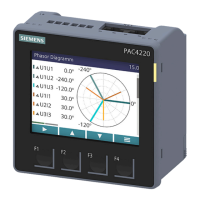
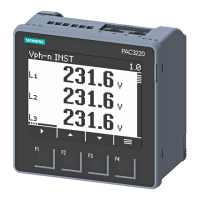

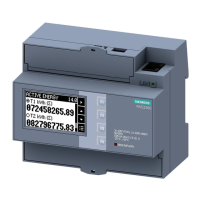
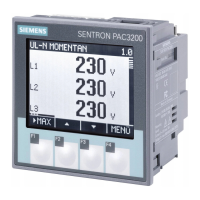
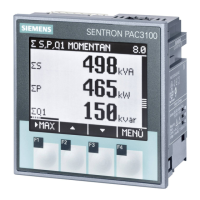
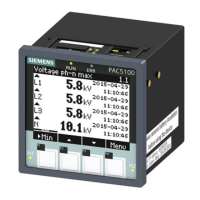
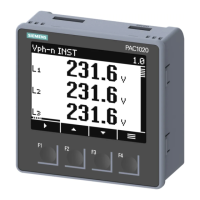
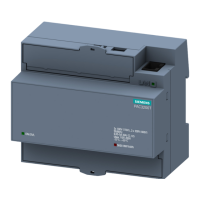
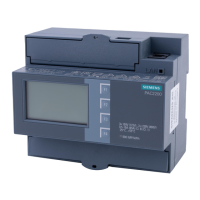

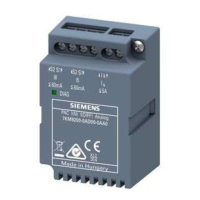
